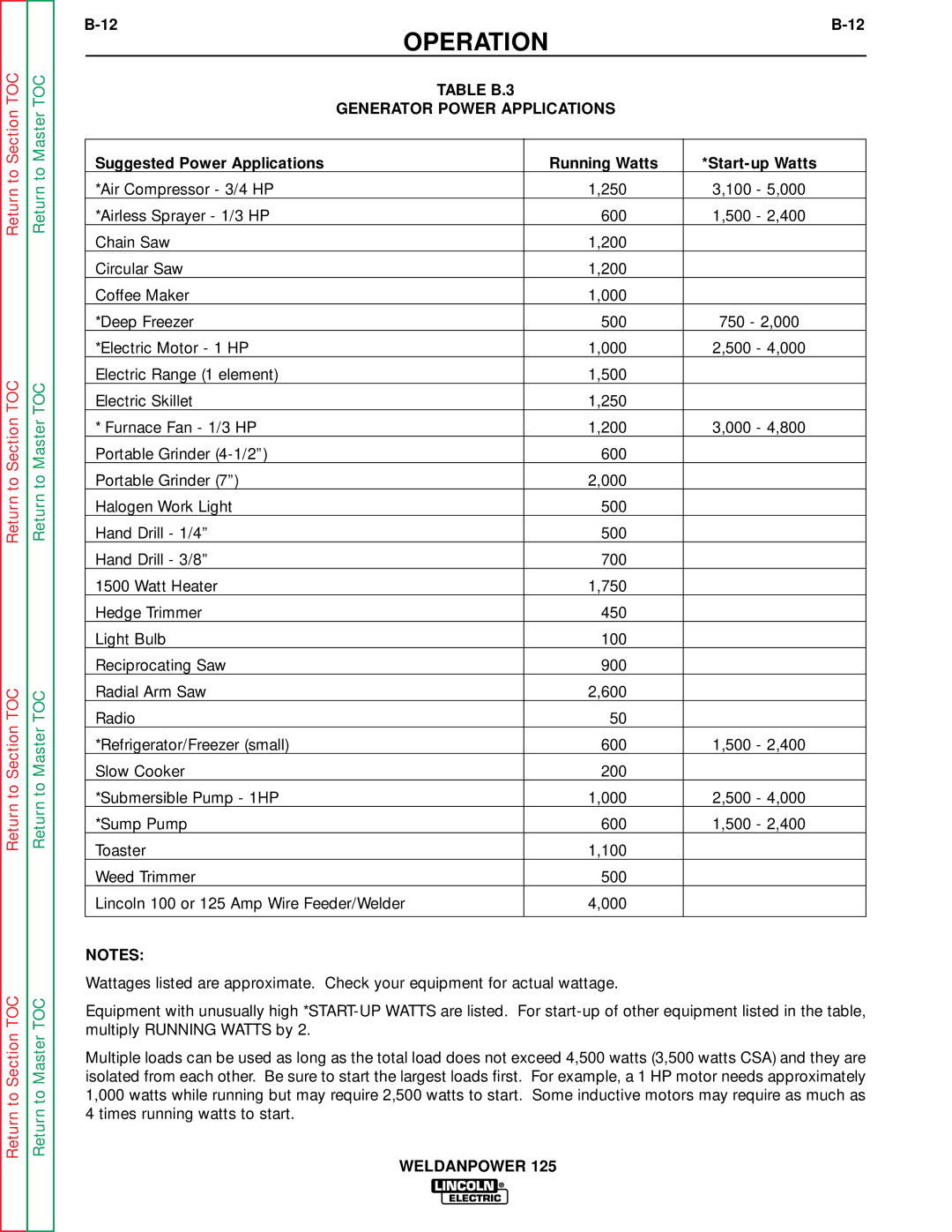
Return to Section TOC
Return to Section TOC
Return to Section TOC
Return to Section TOC
Return to Master TOC
Return to Master TOC
Return to Master TOC
Return to Master TOC
| |||
OPERATION |
|
| |
TABLE B.3 |
|
| |
GENERATOR POWER APPLICATIONS |
| ||
|
|
|
|
Suggested Power Applications |
| Running Watts |
|
*Air Compressor - 3/4 HP |
| 1,250 | 3,100 - 5,000 |
*Airless Sprayer - 1/3 HP |
| 600 | 1,500 - 2,400 |
Chain Saw |
| 1,200 |
|
Circular Saw |
| 1,200 |
|
Coffee Maker |
| 1,000 |
|
*Deep Freezer |
| 500 | 750 - 2,000 |
*Electric Motor - 1 HP |
| 1,000 | 2,500 - 4,000 |
Electric Range (1 element) |
| 1,500 |
|
Electric Skillet |
| 1,250 |
|
* Furnace Fan - 1/3 HP |
| 1,200 | 3,000 - 4,800 |
Portable Grinder |
| 600 |
|
Portable Grinder (7”) |
| 2,000 |
|
Halogen Work Light |
| 500 |
|
Hand Drill - 1/4” |
| 500 |
|
Hand Drill - 3/8” |
| 700 |
|
1500 Watt Heater |
| 1,750 |
|
Hedge Trimmer |
| 450 |
|
Light Bulb |
| 100 |
|
Reciprocating Saw |
| 900 |
|
Radial Arm Saw |
| 2,600 |
|
Radio |
| 50 |
|
*Refrigerator/Freezer (small) |
| 600 | 1,500 - 2,400 |
Slow Cooker |
| 200 |
|
*Submersible Pump - 1HP |
| 1,000 | 2,500 - 4,000 |
*Sump Pump |
| 600 | 1,500 - 2,400 |
Toaster |
| 1,100 |
|
Weed Trimmer |
| 500 |
|
Lincoln 100 or 125 Amp Wire Feeder/Welder |
| 4,000 |
|
|
|
|
|
NOTES:
Wattages listed are approximate. Check your equipment for actual wattage.
Equipment with unusually high
Multiple loads can be used as long as the total load does not exceed 4,500 watts (3,500 watts CSA) and they are isolated from each other. Be sure to start the largest loads first. For example, a 1 HP motor needs approximately 1,000 watts while running but may require 2,500 watts to start. Some inductive motors may require as much as 4 times running watts to start.
WELDANPOWER 125
